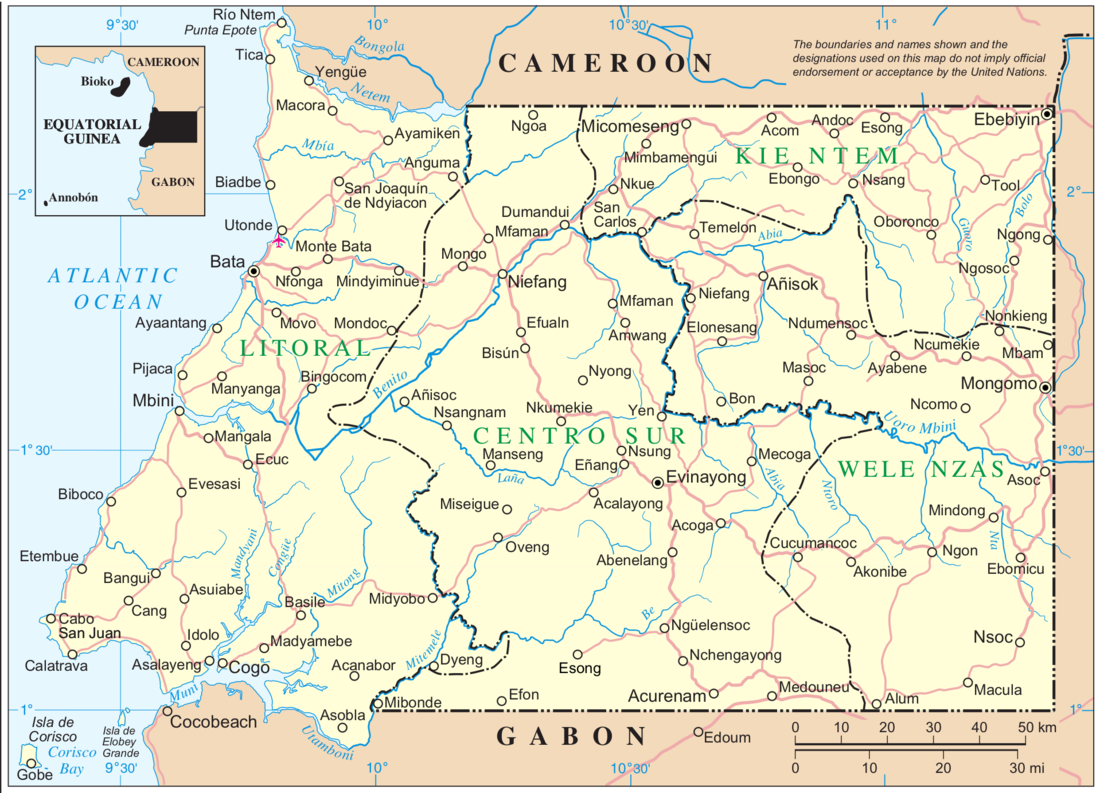Top Qs
Timeline
Chat
Perspective
Río Muni
Mainland geographical region of Equatorial Guinea From Wikipedia, the free encyclopedia
Remove ads
Río Muni (called Mbini in Fang) is the Continental Region (called Región Continental in Spanish) of Equatorial Guinea, and comprises the mainland geographical region, covering 26,017 square kilometres (10,045 sq mi). The name is derived from the Muni River, along which the early Europeans had built the Muni River Settlements.
This article includes a list of general references, but it lacks sufficient corresponding inline citations. (December 2019) |


Río Muni is bordered to the north by Cameroon, to the east and south by Gabon and to the west by the Gulf of Guinea.[1]
Remove ads
History
Río Muni was ceded by Portugal to Spain in 1778 in the Treaty of El Pardo. The Spanish had hoped to collect slaves to work in their other overseas possessions, but the settlers died of yellow fever, and the area was deserted. Cocoa and timber became major industries upon recolonization. Río Muni, along with Bioko, became a province of Spanish Guinea in 1959.
Remove ads
Population
In 2015, 885,015 people—about 72% of Equatorial Guinea's population—lived in Río Muni. The main languages spoken in Río Muni are Fang-Ntumu, which is spoken in the north, and Fang-Okak, spoken in the south. Spanish is also spoken, although only as a second language.
Provinces
Río Muni comprises five provinces:
Cities
The largest city is Bata, which also serves as the regional administrative capital. Other major towns include Evinayong, Ebebiyín, Acalayong, Acurenam, Mongomo and Mbini.
See also
References
Wikiwand - on
Seamless Wikipedia browsing. On steroids.
Remove ads
